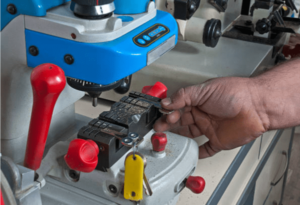
If your home has a fireplace, you probably know the comfort a crackling fire brings on a chilly evening. But have you thought about what’s happening inside your chimney? Many homeowners overlook this hidden part of their home—until problems arise. One of the smartest investments you can make for your fireplace and your wallet is a chimney liner
Why Your Chimney Needs a Liner: It’s More Than Just an Upgrade
A chimney liner is simply a protective layer installed inside your chimney. While you might not see it, its job is crucial. Unlined or damaged chimneys allow heat, gases, and creosote to damage bricks and mortar, which can lead to expensive repairs—or even house fires.
Modern liners are made from stainless steel, clay, or cast-in-place materials. They work with all sorts of setups, from traditional wood-burning fireplaces to gas inserts and pellet stoves. In fact, “Installing a liner can transform a risky old chimney into something as reliable as a brand-new one,” says local sweep technician Mark Jensen. The result? Chimney liner installation not only keeps your home safer but also helps you avoid costly surprises down the road.
Key Features That Make Chimney Liners a Smart Choice
Here’s what makes a modern chimney liner stand out, especially for families who use their fireplace often or rely on a wood-burning stove chimney for winter warmth:
- Heat Resistance: High-quality liners can handle intense heat, keeping the structure of your chimney safe.
- Corrosion Protection: Stainless steel options resist rust and wear, even with high-efficiency gas appliances.
- Easy Maintenance: Smooth interiors mean less creosote buildup and easier cleaning, which lowers maintenance costs over time.
- Adapts to Old Chimneys: Liners can bring older fireplaces up to modern safety codes without rebuilding the whole chimney.
Safety and Cost Comparison Table
| Feature | Unlined Chimney | Chimney with Modern Liner |
|---|---|---|
| Fire Risk | High, due to cracks & creosote leaks | Low, as liner contains heat & gases |
| Annual Maintenance Costs | $400–$800 (frequent repairs) | $100–$200 (simple cleaning) |
| Energy Efficiency | Poor—drafty, wastes heat | Good—improves appliance efficiency |
| Expected Lifespan | Can deteriorate quickly | 20+ years with proper care |
| Insurance Premiums | May be higher, safety concerns | Often lower, recognized as safe |
Long-Term Savings: More Than Just Avoiding Repairs
The up-front cost of chimney liner installation may feel like a big commitment, but it pays off in several ways:
- Prevents Major Damage: By stopping moisture and corrosive gases from reaching the masonry, you avoid huge bills from rebuilding a chimney down the road.
- Improves Heating Efficiency: A lined chimney keeps your fireplace or stove burning hotter and cleaner, meaning you use less fuel. This adds up to real savings every winter.
- Protects Against Carbon Monoxide: A properly installed liner channels dangerous gases safely outside, reducing the risk of carbon monoxide leaks—a key reason why many insurance companies offer discounts for lined chimneys.
- Boosts Home Value: If you ever sell your home, a certified liner is a big plus for buyers—and can help you pass home inspections with ease.
“A little prevention goes a long way. Spending a bit on a chimney liner now can save you thousands in unexpected repairs and help keep your family safe for years to come.”
— Mark Jensen, Certified Chimney Sweep
Emergency Services: Why a Liner Matters When Things Go Wrong
When a chimney emergency strikes—like a sudden chimney fire or a cracked flue discovered during a cold snap—having a liner can make all the difference. Liners contain the intense heat of a fire, giving you precious time to act and call for help. Emergency chimney services often recommend installing a liner as a permanent solution after a close call.
For those in areas with older homes or frequent storms, a liner also helps your chimney withstand sudden shifts and harsh weather, so you’re not left scrambling for repairs mid-winter. Plus, with the right liner, future maintenance visits are quicker and less expensive since the sweep can access and clean the flue more efficiently.
Conclusion: Invest in a Chimney Liner for Peace of Mind and Long-Term Savings
At the end of the day, a chimney liner is one of those upgrades that quietly pays for itself. It cuts down on repairs, reduces your heating bills, and—most importantly—keeps your family safer when you light a fire. Whether you’re living in a historic house or just want to get the most out of your fireplace, lining your chimney is a smart move that protects both your wallet and your home.
If you’re unsure where to begin, contact a professional for an inspection. With the right advice, you’ll have a warm, safe, and efficient fireplace for years to come.
Read more: Costa Mesa Chimney Sweep

